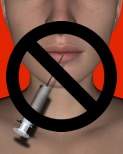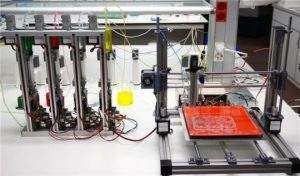This Week in Anti-Aging Innovations
It’s a thrilling time to be involved with anti-aging products and treatments, even if you’re just a witness to the constant stream of ingenuity and inventiveness coming out of laboratories and development centers, both in the U.S.A. and globally, as researchers and formulators deliver new discoveries, approaches, and products. It’s science like that that’s helping to drive the worldwide growth in anti-aging.
Want proof? Here are just some of the examples we came across this week:
M.I.T. launches tech to reduce skin puffiness
You might think of M.I.T. as being involved in more earth-shakingly “futuristic” fields like robotics and space technology, but it’s delivered innovations in plenty of other areas, too. They’ve announced the launch of a “liquid Spanx” technology that reduces skin puffiness and promises to be the Next Big Thing for treating eye bags.
Their secret? A compression technology that creates a “second skin” film using silicone-based polymers. The tech has been around since 2016, developed by M.I.T. and affiliated startup Olivo Labs, but this new adaptation targets under-eye puffiness, and also works for other conditions such as cellulite.
Israeli scientists invent hyaluronic acid cream

Cosmetics firm Hava Zingboim has used their technology in producing the cream, which is claimed to penetrate to even deep skin layers. Previously, there was no known means of getting hyaluronic acid to penetrate the skin in its natural state; this approach utilizes micronization of the acid to finally pass that barrier.
Cell therapy targets hair loss and skin aging
A Canadian firm, RepliCel Life Sciences, has been trumpeting the success of its own alternate anti-aging therapy: intradermal injections of a collagen-expressing, hair follicle-derived “fibroblasts” of a patient’s own cells to combat skin aging and hair loss, the latter affecting 70% of men and 40% of women.
The therapy, still in phase 1 clinical trials, is also aimed at rejuvenation of tendons. In tackling baldness, it works by kick-starting follicles that have stopped producing new hairs. When the product finally reaches commercial launch, it’ll be targeted at dermatologists.
Will 3D bioprinting reverse aging’s effects?
It’s not in the realm of creams, cosmetics or injections, but it’s fascinating: A team at Northwestern University used 3D bioprinting to prove how a female mouse’s ovary can be replaced with a bioprosthetic ovary, allowing it to ovulate and even give birth to pups. These mice are also able to nurse their young and produce a higher level of hormones. In essence, a lab-manufactured organ restored the test animal’s fertility, offering hope for human patients.

